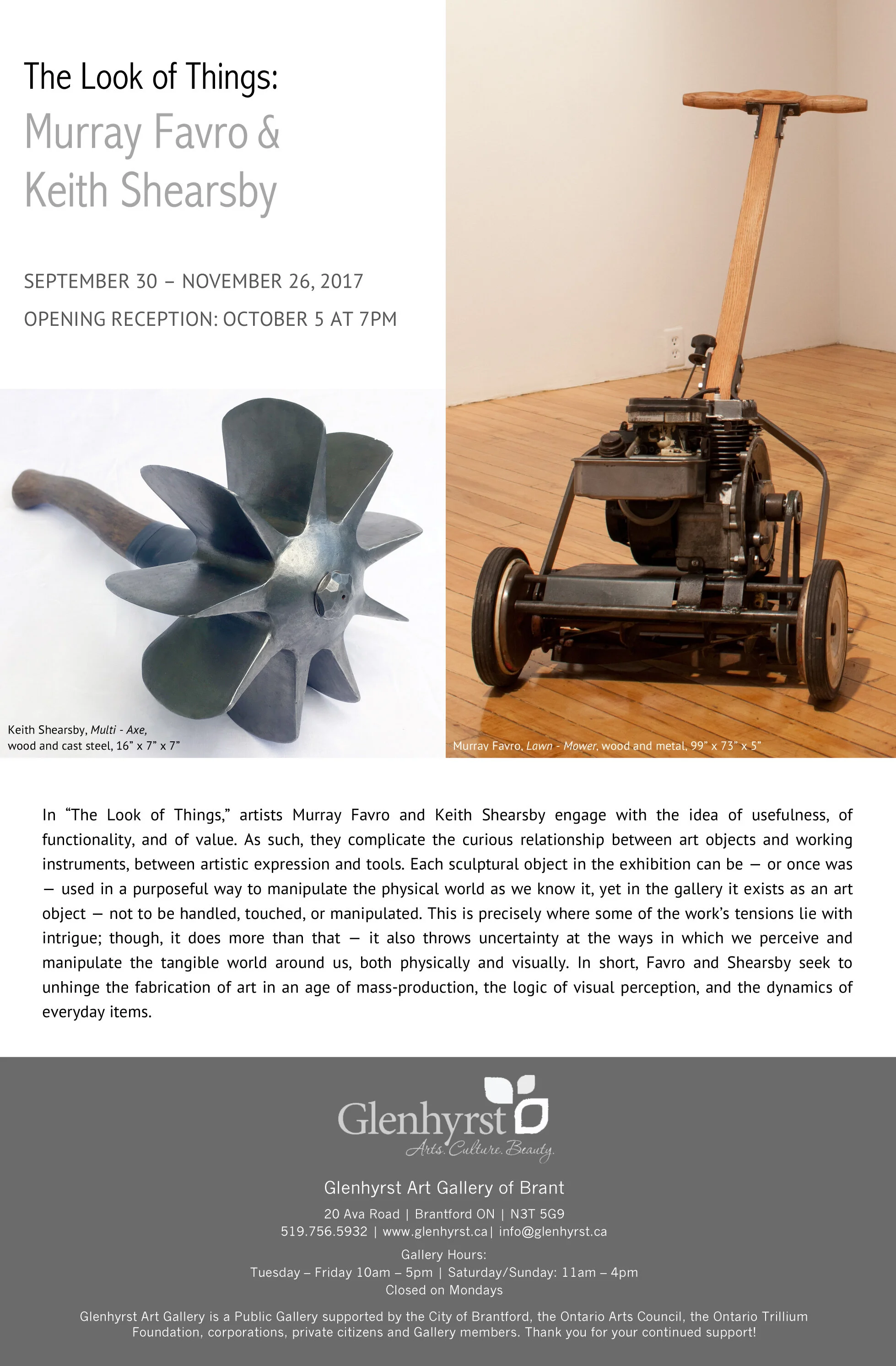Sept 30 - November 26, 2017
The Look of Things: Keith Shearsby & Murray Favro
In “The Look of Things,” artists Murray Favro and Keith Shearsby engage with the idea of usefulness, of functionality, and of value. As such, they complicate the curious relationship between art objects and working instruments, between artistic expression and tools. Each sculptural object in the exhibition can be—or once was—used in a purposeful way to manipulate the physical world as we know it, yet in the gallery it exists as an art object—not to be handled, touched, or manipulated. This is precisely where some of the work’s tensions lie and intrigue; though, it does more than that—it also throws uncertainly at the ways in which we perceive and manipulate the tangible world around us, both physically and visually. In short, Favro and Shearsby seek to unhinge the fabrication of art in an age of mass-production, the logic of visual perception, and the dynamics of everyday items.
“The Look of Things” examines the ways that we can (or should) use things but cannot pick them up; these are things that invite us to touch but we are denied in doing so; these are things that we see but that we should feel as well. It fundamentally explores these complex interactions, paradoxes, and differences; in doing so, it also questions the context of materials inside the gallery as opposed to beyond it, looking at the variations between very different worlds.

